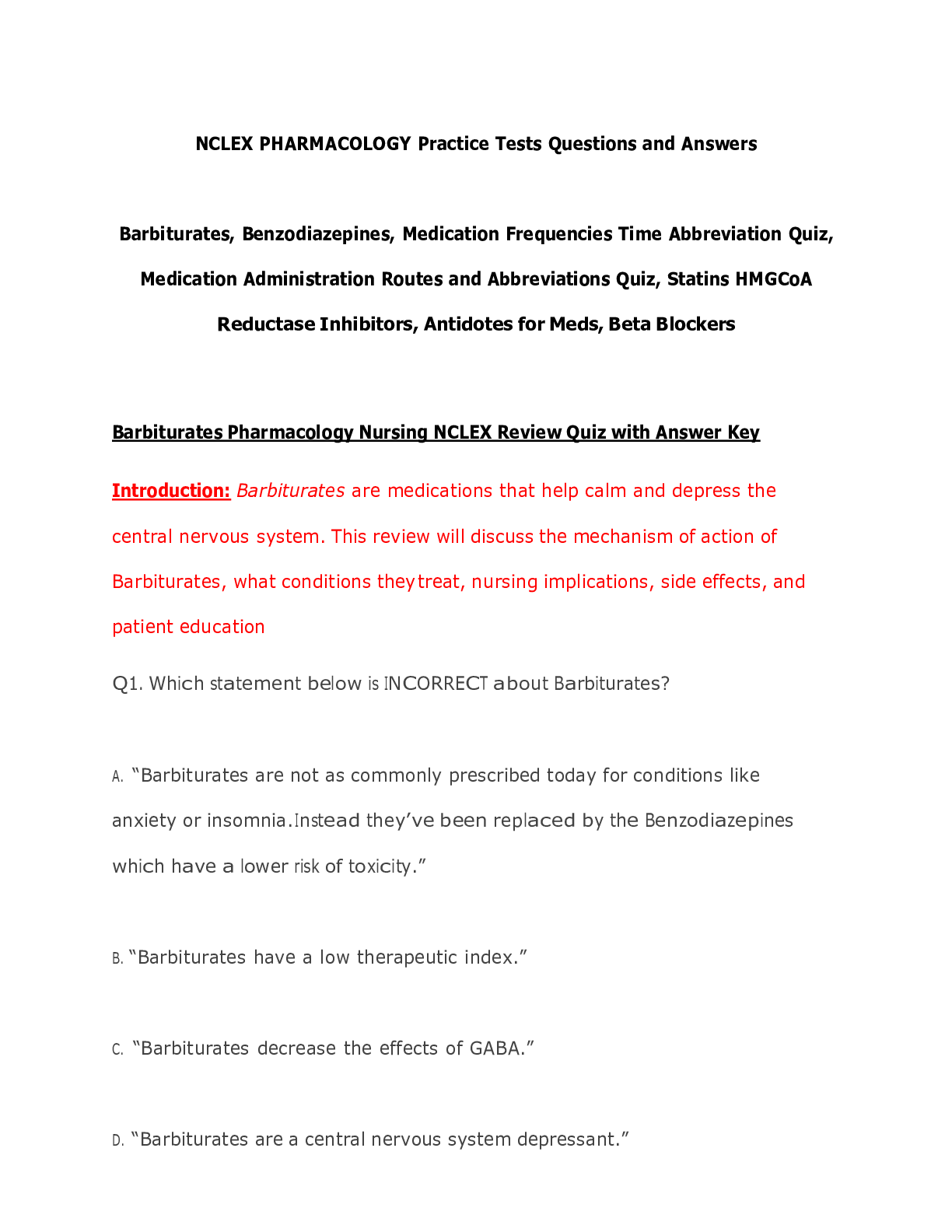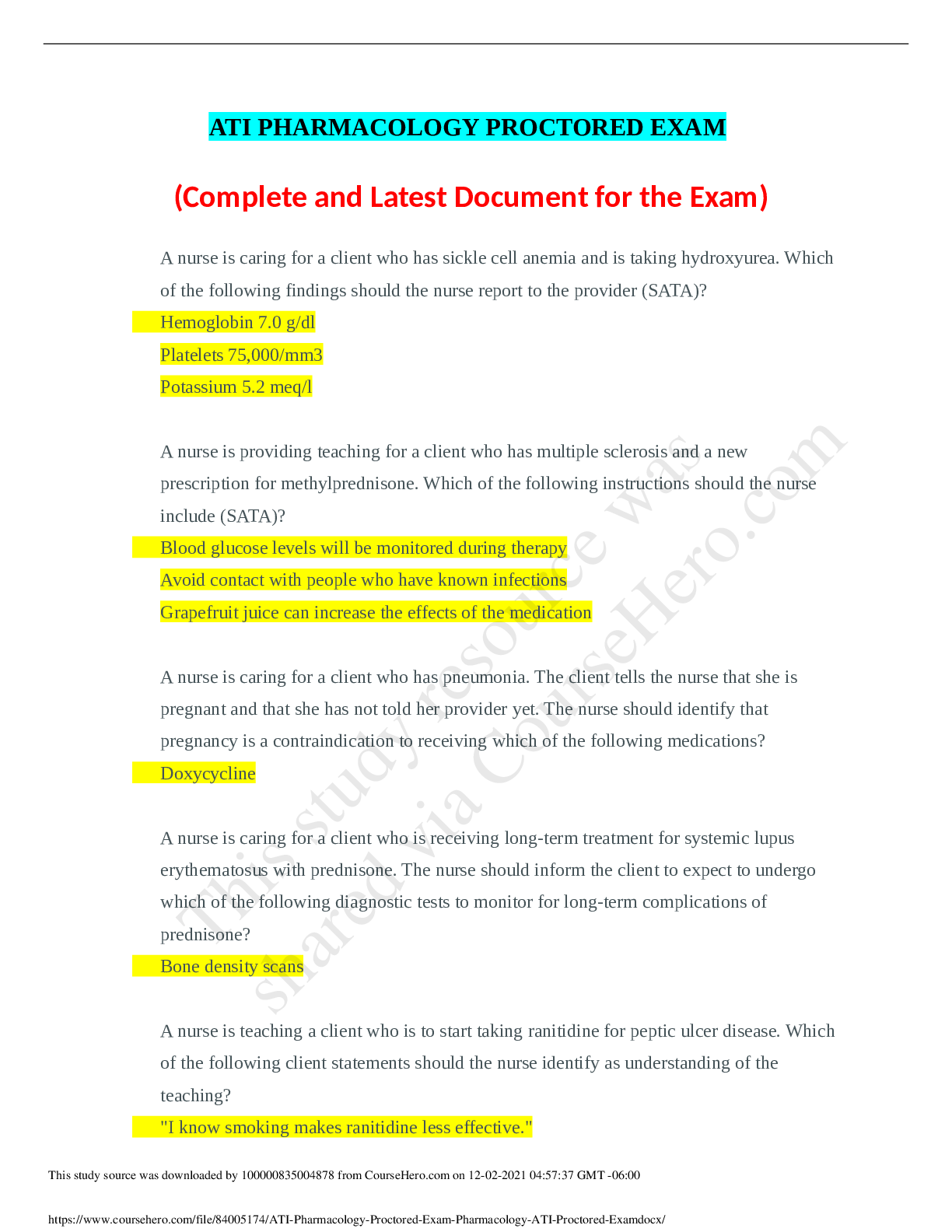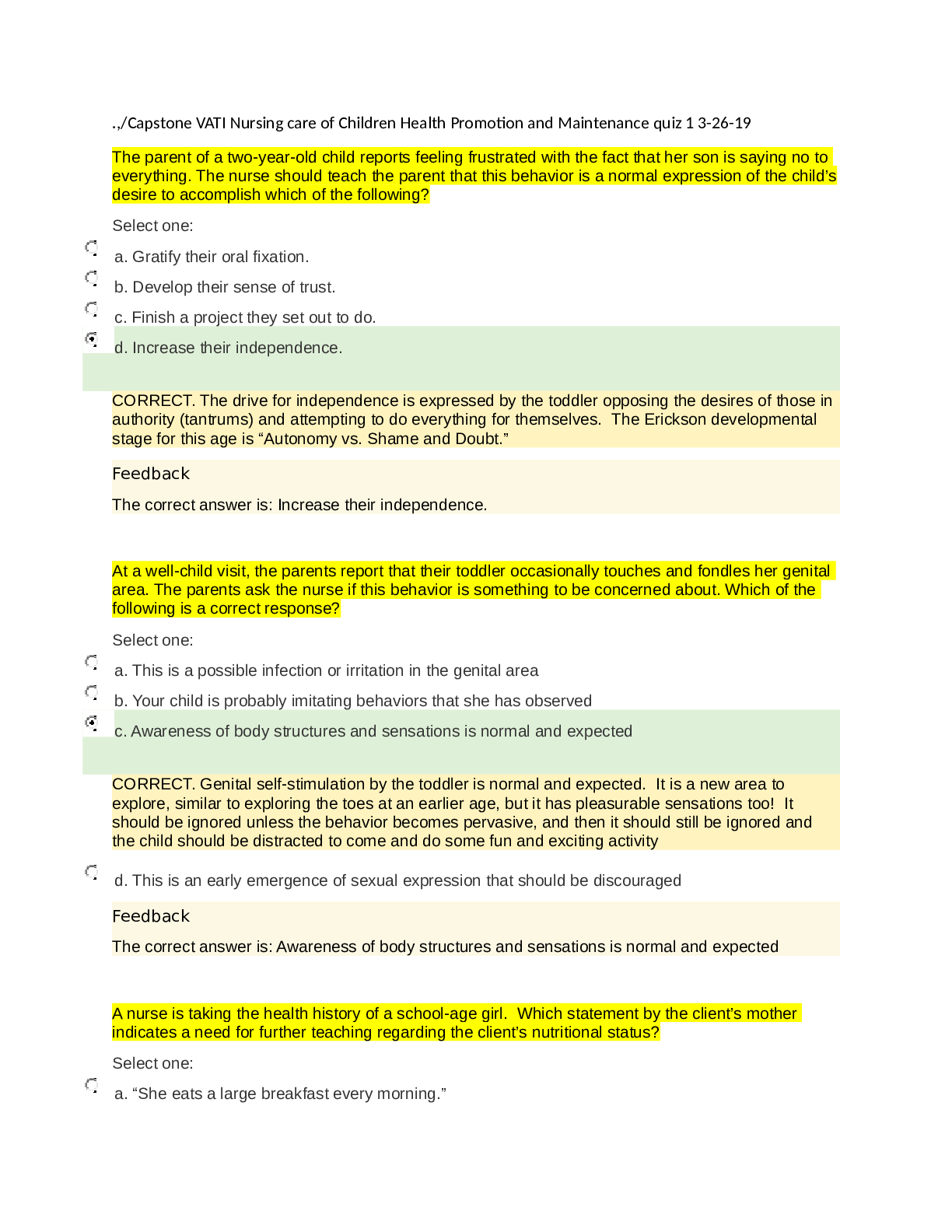*NURSING > EXAM PROCTORED > ATI RN NURSING CARE OF CHILDREN PROCTORED EXAM[PROCTORED EXAM WITH CORRECT QUESTIONS AND ANSWERS ]A (All)
ATI RN NURSING CARE OF CHILDREN PROCTORED EXAM[PROCTORED EXAM WITH CORRECT QUESTIONS AND ANSWERS ]A+GRADE
Document Content and Description Below
ATI RN NURSING CARE OF CHILDREN PROCTORED EXAM 1. A nurse is caring for a child who has absence seizures. Which of the following findings should the nurse expect? (Select all that apply.) A. Loss o... f consciousness B. Appearance of daydreaming C. Dropping held objects D. Falling to the floor E. E. Having a piercing cry 55a 1. A. CORRECT: Loss of consciousness for 5 to 10 seconds is a manifestation of an absence seizure. B. CORRECT: Behavior that resembles daydreaming is a manifestation of an absence seizure. C. CORRECT: A child who is having absence seizures might drop a held object. D. Falling to the floor is a manifestation of a tonic-clonicseizure. E. A piercing cry is a manifestation of a tonic-clonicseizure. 55b 2. A nurse is caring for a child who just experienced a generalized seizure. Which of the following is the priority action for the nurse to take? A. Maintain the child in a side-lying position. B. Loosen the child's restrictive clothing. C. Reorient the child to the environment. D. Note the time and characteristics of the child's seizure. 56a 2. A. CORRECT: Following a seizure, children often experience vomiting. Using the airway, breathing, circulation priority-setting framework, the first action the nurse should take is to place the child in a side-lying position to maintain a patent airway and prevent aspiration of secretions. B. Loosening the child's restrictive clothing is an appropriate action. However, it is not the priority action. C. R eorienting the child to the environment following a generalized seizure is an appropriate action. However, it is not the priority action. D. Noting the time and characteristics of the child's seizure is an appropriate action. However, it is not the priority action. 56b 3. A nurse is providing teaching to the parent of a child who is to have an electroencephalogram (EEG). Which of the following responses should the nurse include in the teaching? A. "Decaffeinated beverages should be offered on the morning of the procedure. " B. "Do not wash your child's hair the night before the procedure." C. "Withhold all foods the morning of the procedure." D. "Give your child an analgesic the night before the procedure." 57a 3. A. CORRECT: Caffeine can alter the results of an EEG and should be avoided prior to the test. B. The child's hair should be washed to remove oils that permit adherence of the EEG electrodes. C. Foods are not withheld prior to an EEG. D. Analgesics can alter the results of an EEG and should be avoided prior to the test. A nurse is caring for a school-age child who is receiving a blood transfusion. Which of the following manifestations should alert the nurse to a possible hemolytic transfusion reaction? a. Laryngeal edema b. Flank pain c. Distended neck veins d. Muscular weakness Answer- b. Flank pain. The nurse should recognize that flank pain is caused by the breakdown of RBCs and is an indication of a hemolytic reaction to the blood transfusion. A- Laryngeal edema is an indication of an allergic reaction to the blood transfusion. C- Distended neck veins are an indication of circulatory overload, which is a complication of a blood transfusion. D- Muscle weakness is an indication of an electrolyte disturbance, which is a complication of a blood transfusion. A community health nurse is assessing an 18-month-old toddler in a community day care. Which of the following findings should the nurse identify as a potential indication of physical neglect? a. Resists having an axillary temperature taken b. Exhibits withdrawal behaviors when her parent leaves c. Has multiple bruises on her knees d. Poor personal hygiene Answer- d. Poor personal hygiene. Poor personal hygiene in a toddler is a potential indication of physical neglect. Because toddlers are still dependent on their parents for help with hygiene needs, poor personal hygiene indicates a lack of supervision. A- The toddler has begun to develop a sense of body image and boundaries and can be resistant to intrusive assessments such as assessing the mouth or ears, or taking an axillary temperature. Therefore, this finding is not an indication of physical neglect. B- Separation anxiety is an expect [Show More]
Last updated: 1 year ago
Preview 1 out of 14 pages
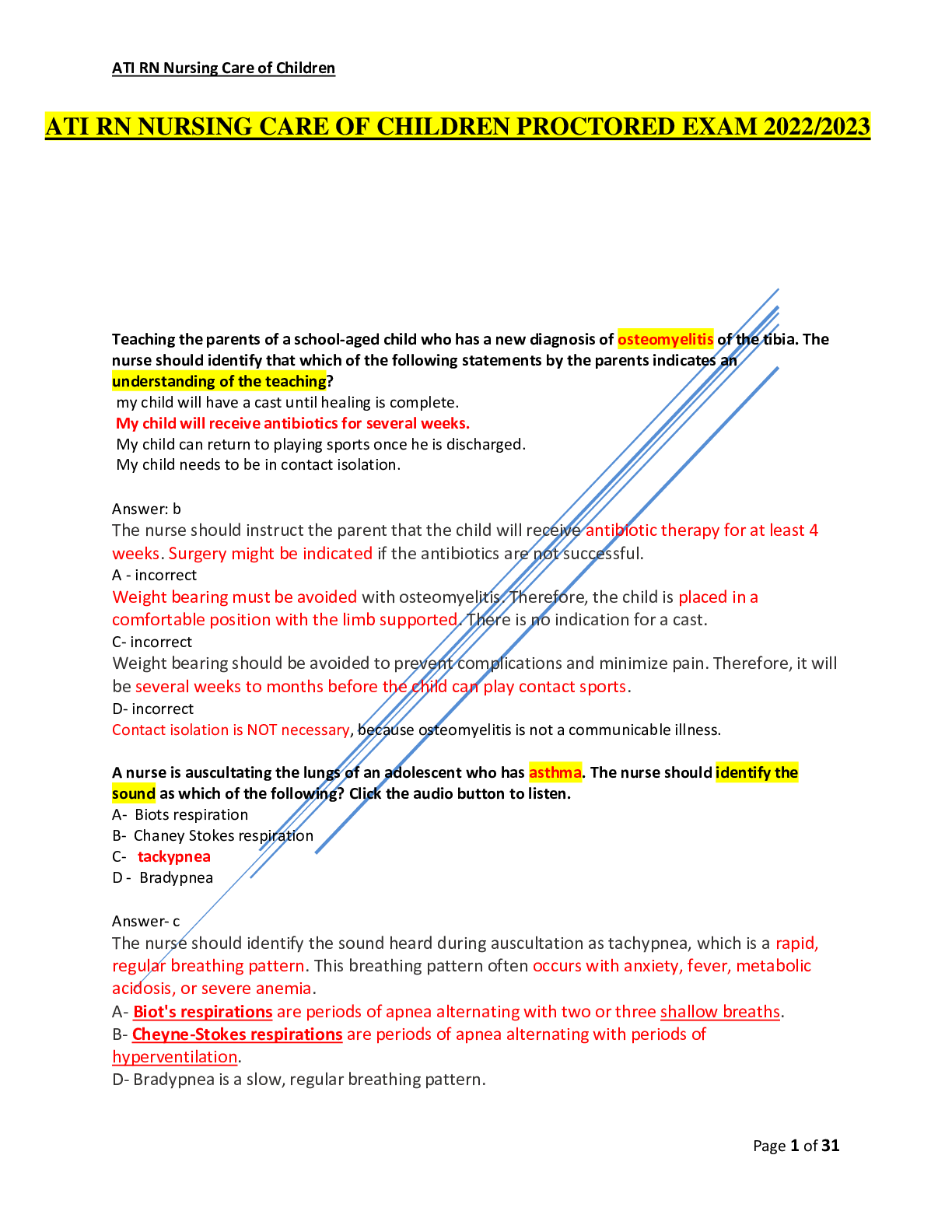
Reviews( 0 )
Document information
Connected school, study & course
About the document
Uploaded On
Mar 22, 2021
Number of pages
14
Written in
Additional information
This document has been written for:
Uploaded
Mar 22, 2021
Downloads
0
Views
65


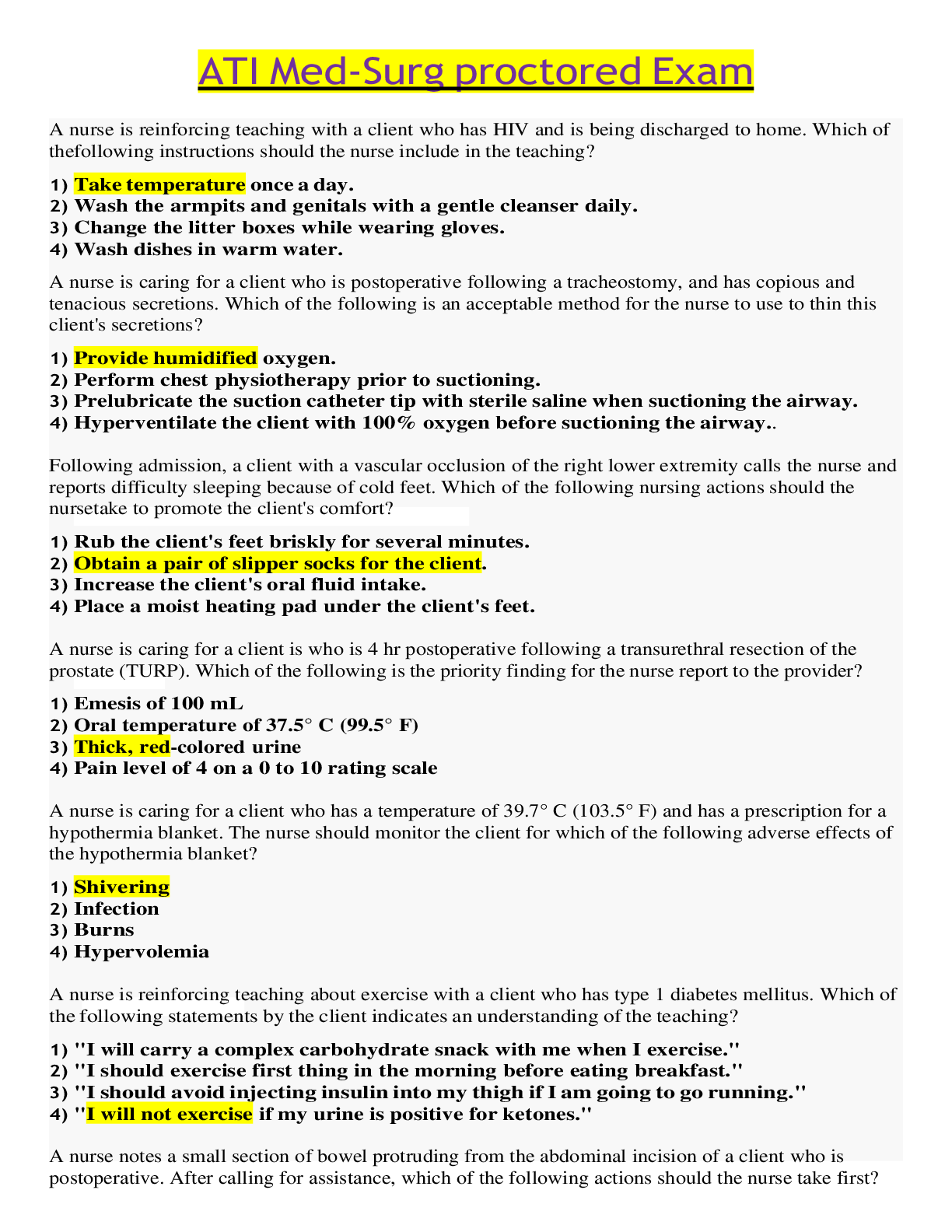




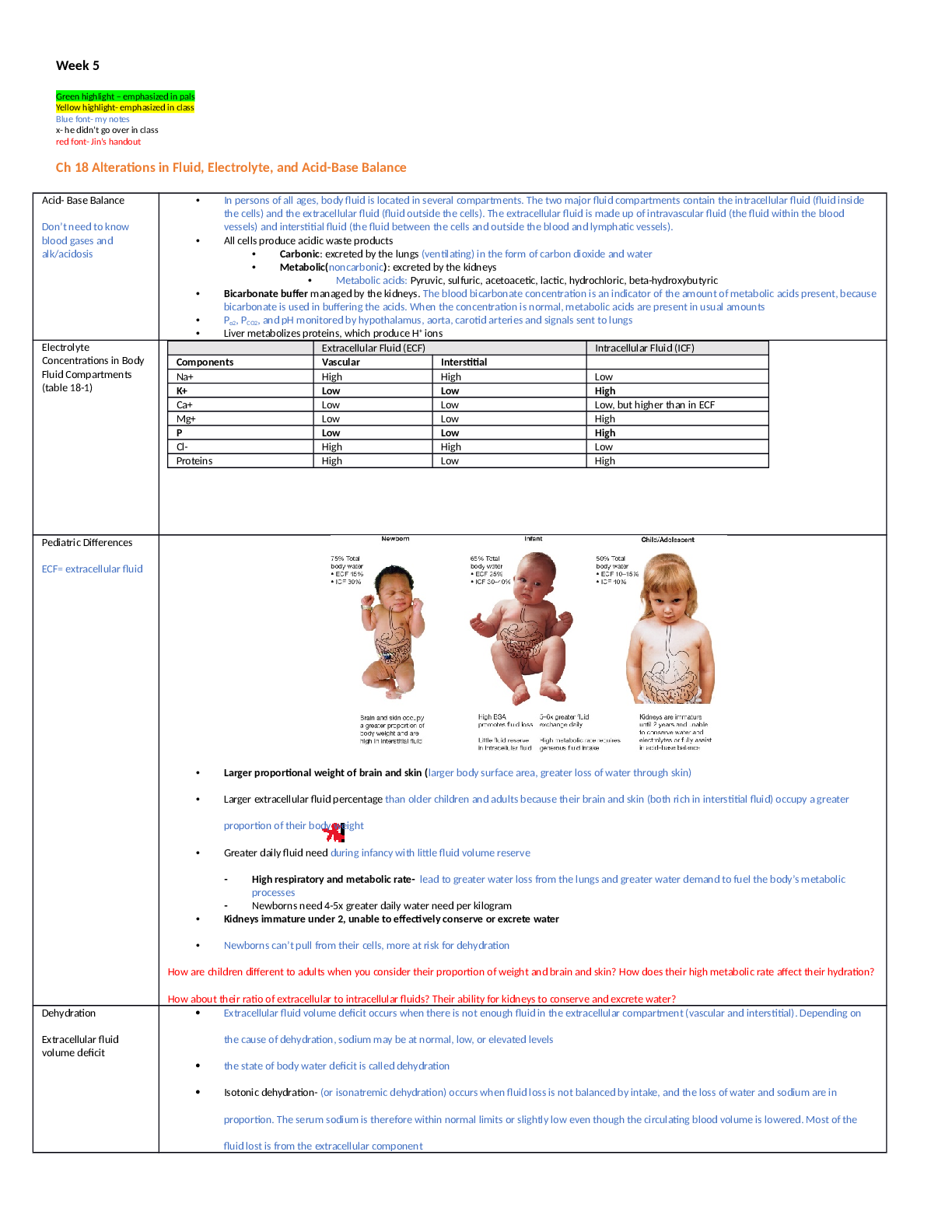


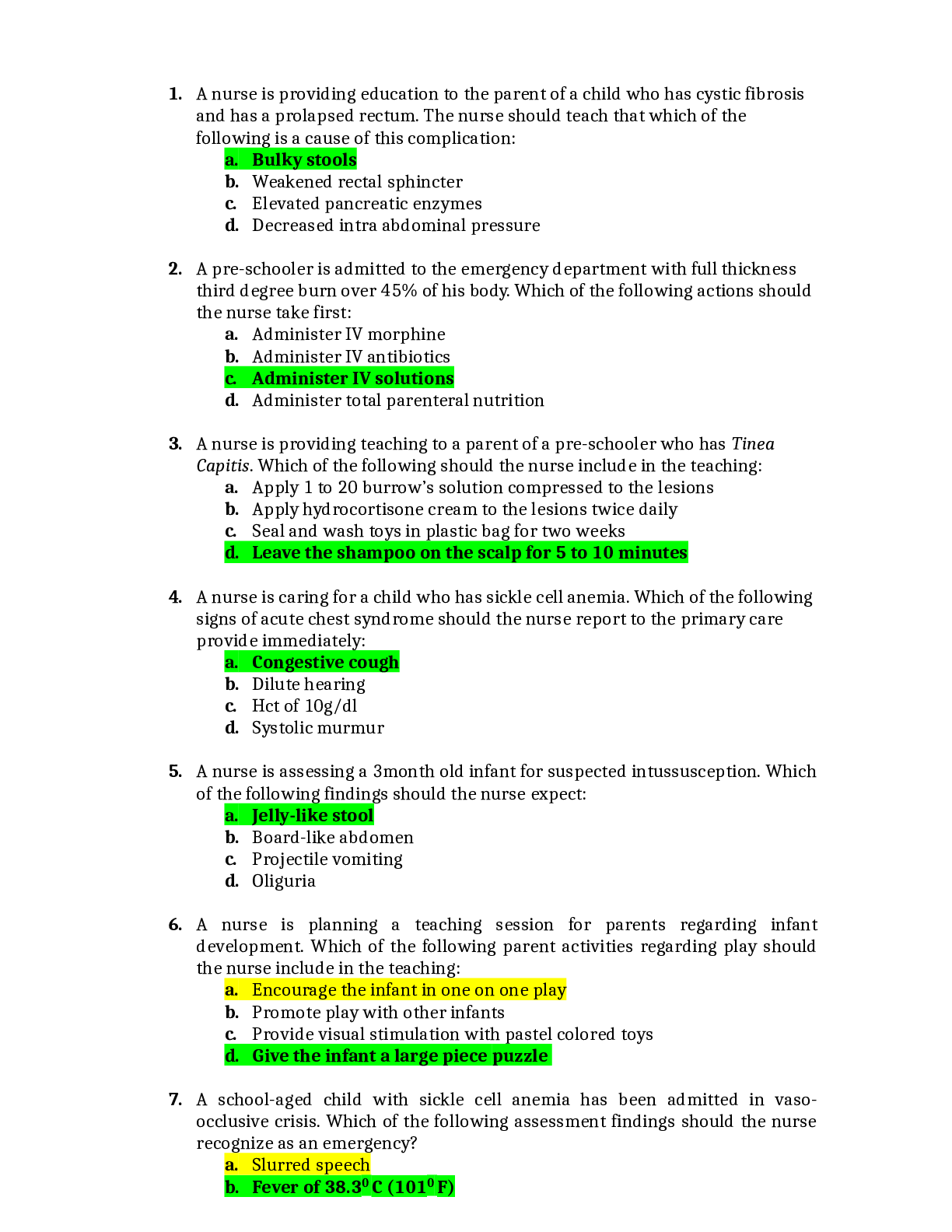
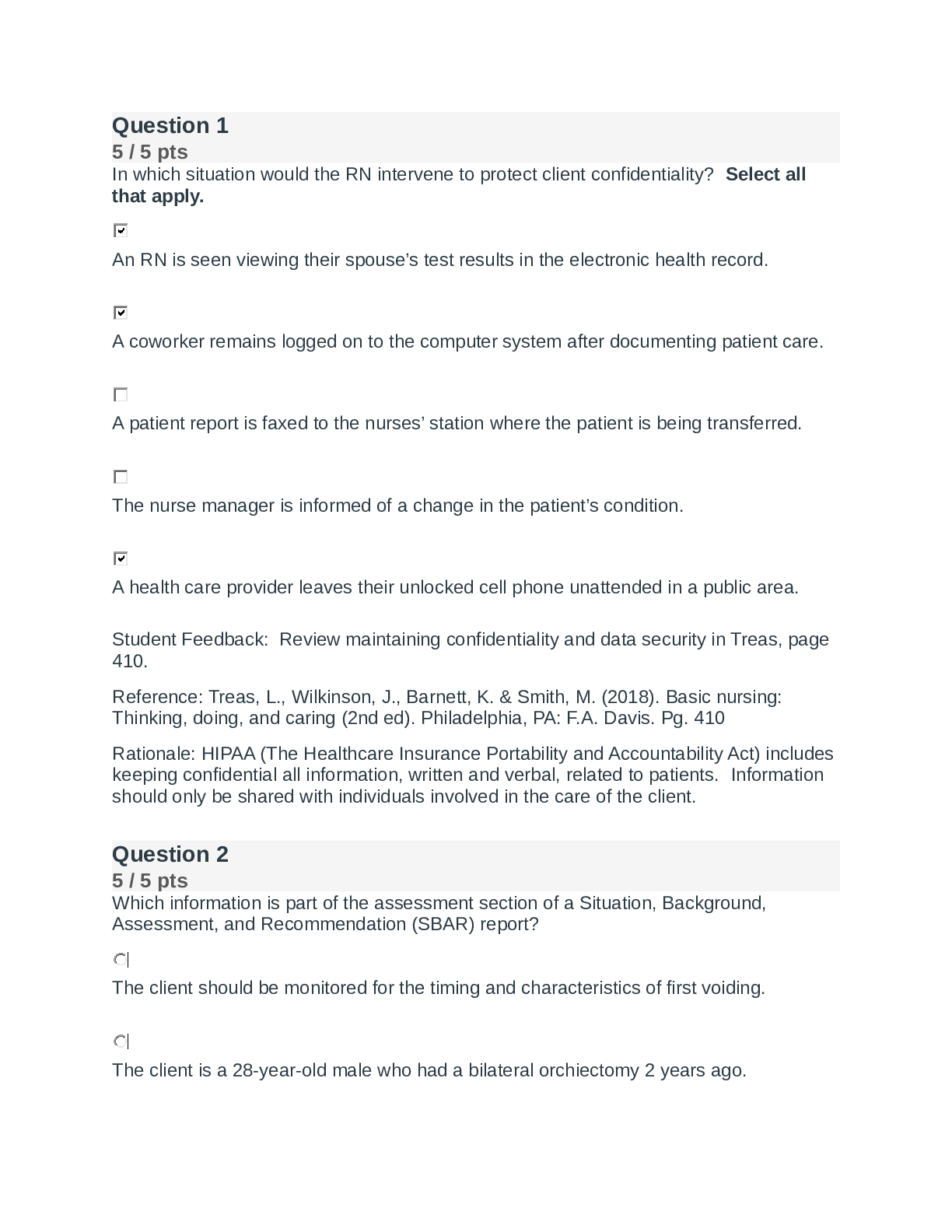
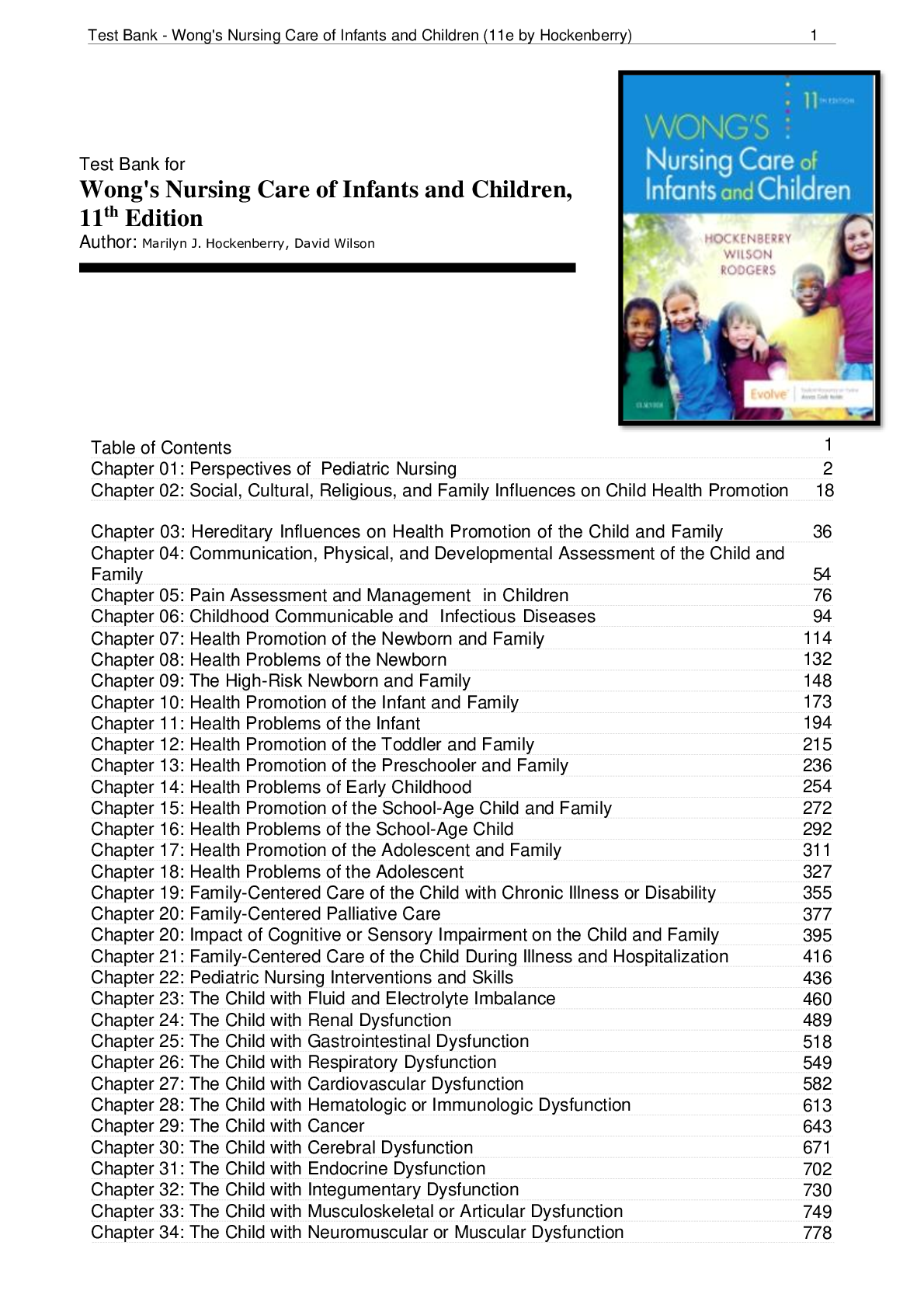
.png)
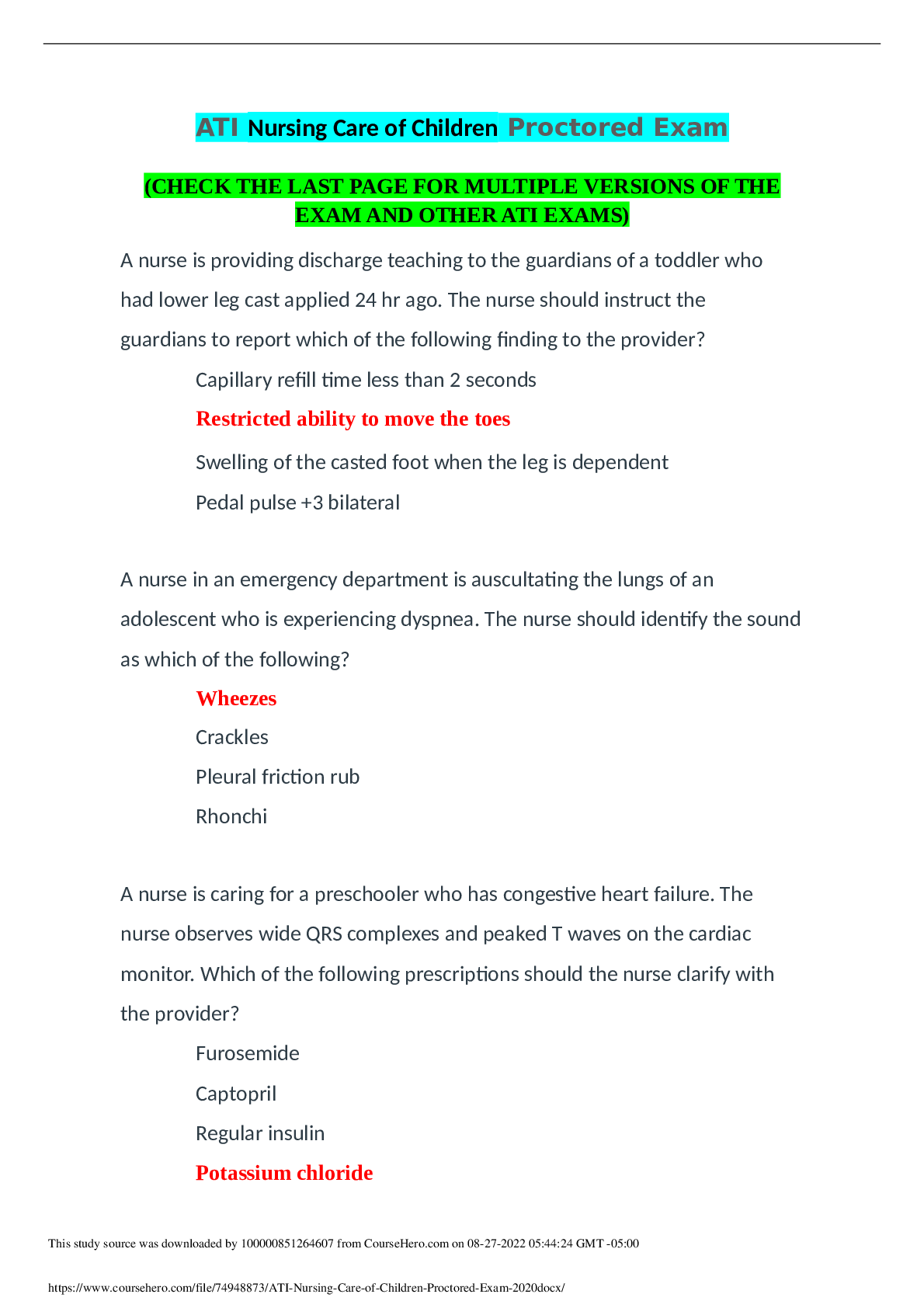



.png)
